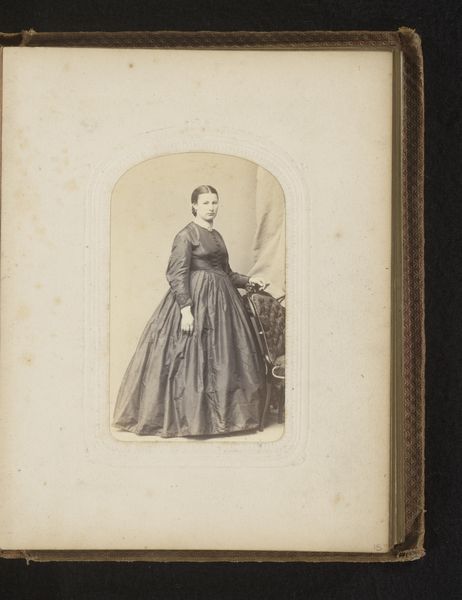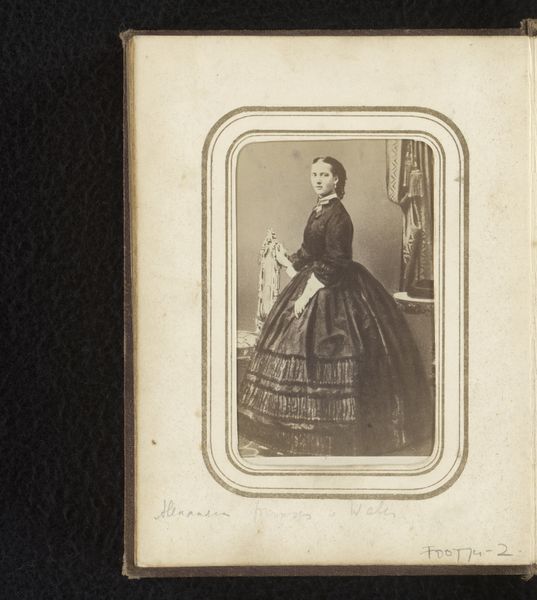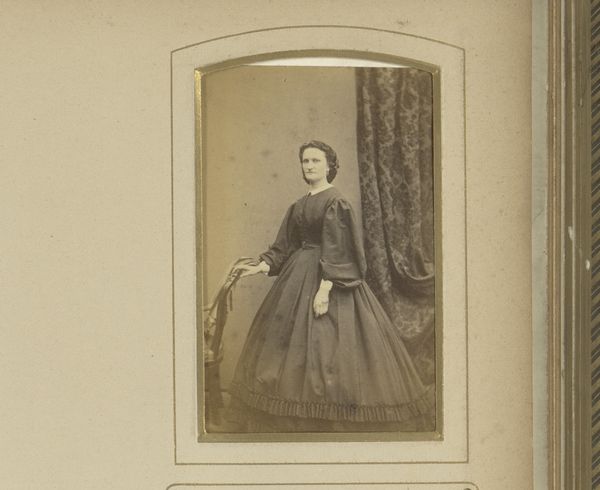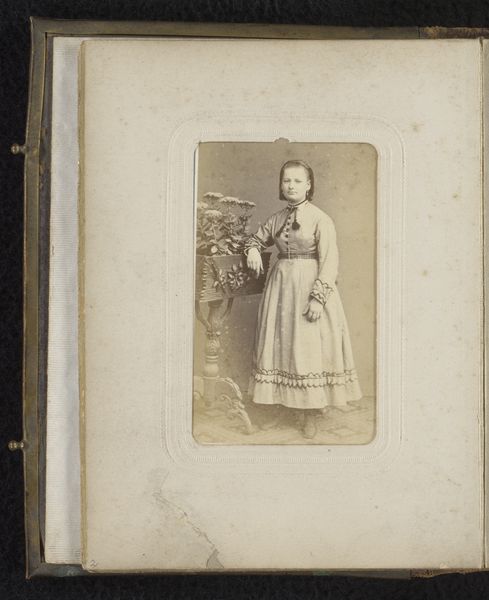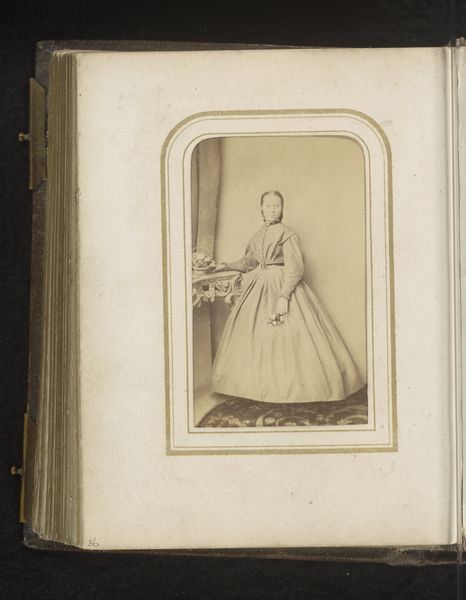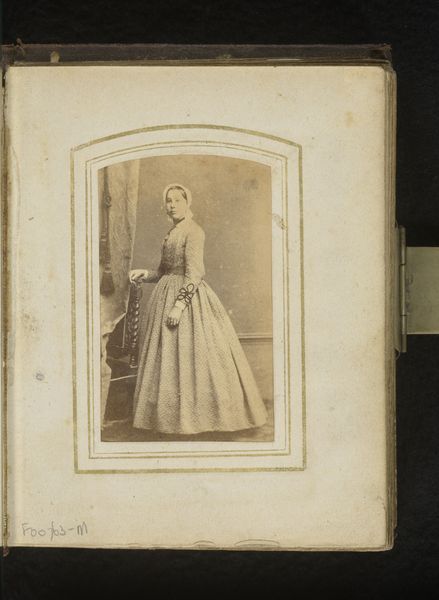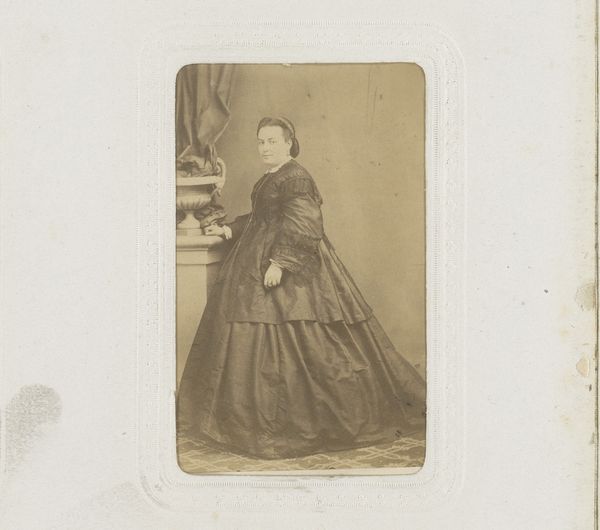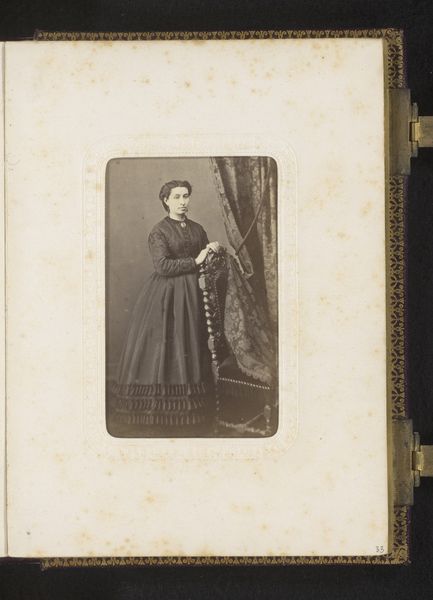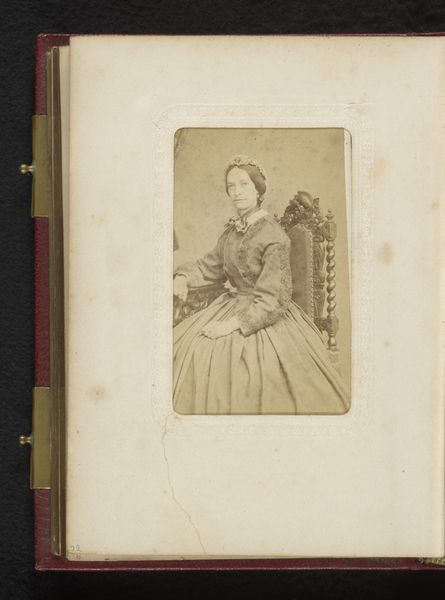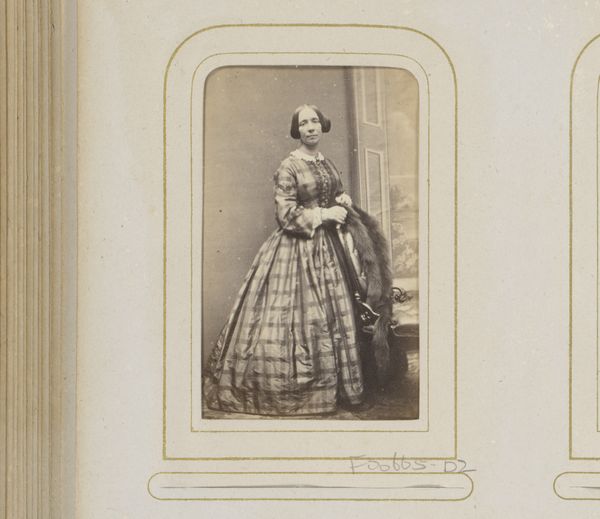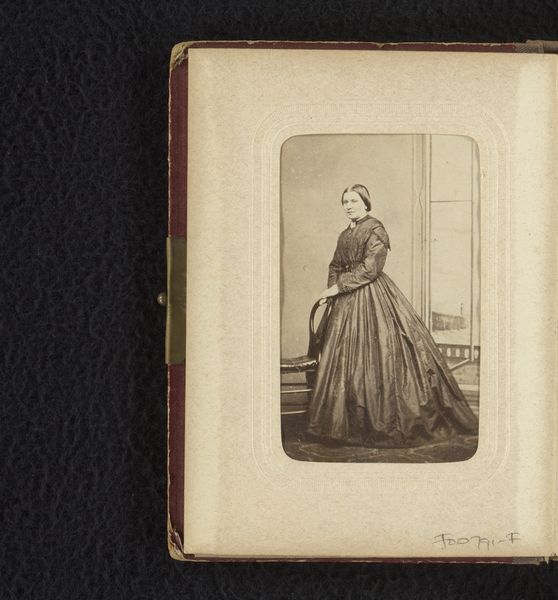
photography
#
portrait
#
still-life-photography
#
photography
#
genre-painting
Dimensions: height 83 mm, width 50 mm
Copyright: Rijks Museum: Open Domain
Editor: Here we have a photograph titled "Portret van een zittende vrouw," dating somewhere between 1860 and 1899, and attributed to Mozes Cohen. What strikes me is the formality of the woman’s pose, even while she’s holding what appears to be a letter. What’s your interpretation of this work? Curator: Well, this photograph offers a glimpse into the social conventions and aspirations of the time. Photography in the mid-to-late 19th century was becoming more accessible to the middle class, offering a way to participate in visual culture that had previously been limited to the elite who could commission painted portraits. Editor: So this was about participating in culture and portraying social standing? Curator: Precisely. This portrait is almost certainly a commissioned piece, intended to project respectability and perhaps even some social status. Note her attire—the striped dress, for example. What does it communicate? Editor: It seems like she has some money. It’s an elaborate fabric. It also shows her conforming to gender norms of dress and posture at that time. Curator: Exactly. Early photography was shaped by pre-existing social and visual conventions and this is reflected in how people presented themselves. Consider that this portrait may be intended for private display or as a carte-de-visite. Knowing the intended audience changes its social meaning. Editor: It is interesting to consider that people posed to reflect cultural aspirations or norms of conduct in commissioned pictures! Curator: Indeed! Considering these types of photographic images reminds us how social norms play a key role in visual representations of this era. We’ve unpacked some layers of its potential significance just now.
Comments
No comments
Be the first to comment and join the conversation on the ultimate creative platform.

